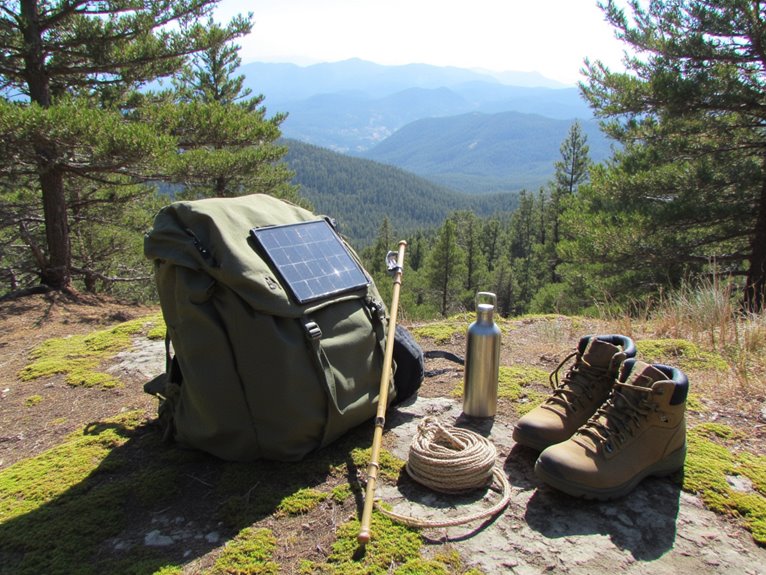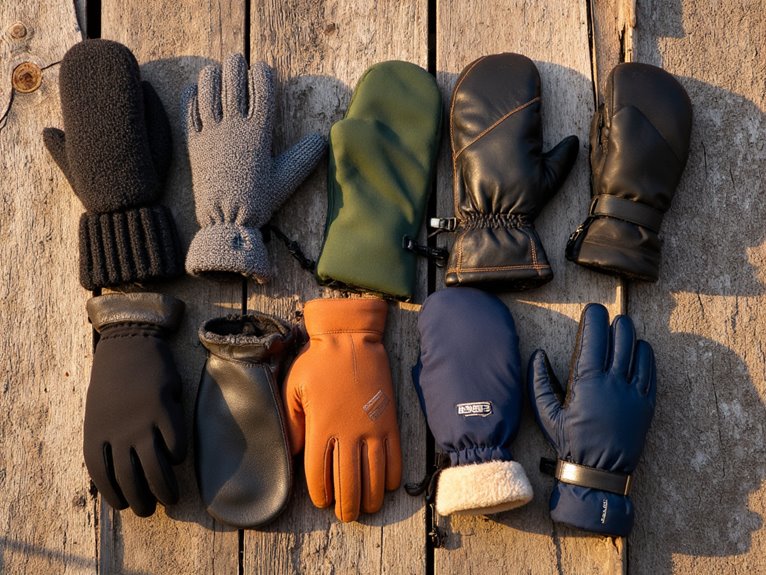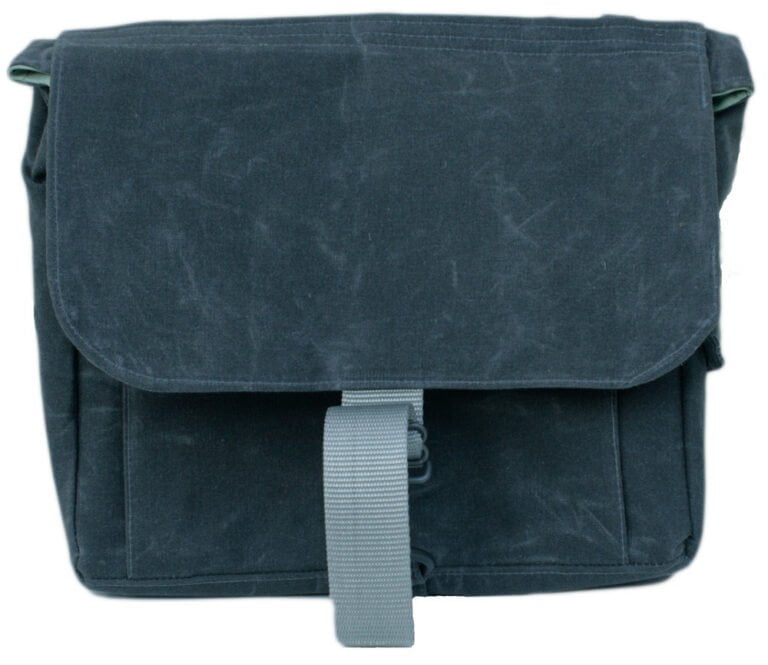Sustainable Backpacking Gear: Brands Leading Environmental Initiatives
You’ll find leading sustainable backpacking brands like Patagonia, Fjällräven, and Mammut revolutionizing outdoor gear through recycled materials and ethical manufacturing. Mammut’s Dream Series uses 98% recycled fibers, while Fjällräven eliminates harmful PFAS chemicals without compromising performance. These companies offer lifetime warranties, transparent supply chains, and genuine Fair Trade certifications. With the eco-friendly backpack market reaching $2.2 billion and 70% of outdoor enthusiasts prioritizing sustainability, these innovations represent industry-wide transformation that extends far beyond basic environmental compliance.
We are supported by our audience. When you purchase through links on our site, we may earn an affiliate commission, at no extra cost for you. Learn more. Last update on 25th November 2025 / Images from Amazon Product Advertising API.
Notable Insights
- Leading brands like Patagonia, Fjällräven, and Osprey incorporate recycled materials and eliminate harmful PFAS chemicals without compromising performance.
- Companies offer lifetime warranties and repair programs, with brands like TOM BIHN and Cotopaxi extending product lifecycles through comprehensive service.
- Patagonia partners with Fair Trade USA while VAUDE provides complete supply chain traceability and transparent manufacturing facility reporting.
- Brands fund conservation through initiatives like Fjällräven’s Arctic Fox program and Osprey’s habitat conservation partnerships with environmental organizations.
- The sustainable backpack market reached $2.2 billion in 2023, driven by 70% of outdoor enthusiasts willing to pay premiums.
Recycled Materials and Eco-Friendly Fabric Innovations
When selecting sustainable backpacking gear, recycled materials represent one of the most notable advances in reducing environmental impact without compromising performance.
Mammut’s Dream Series sleeping bag demonstrates this innovation with 98% recycled fibers and 83% recycled down filling. You’ll find recycled polyester increasingly common across brands like Houdini Sportswear, which incorporates 40% recycled materials, and Patagonia, which uses recycled nylon and cotton.
Leading outdoor brands now prioritize recycled materials, with Mammut achieving 98% recycled fibers and Patagonia incorporating recycled nylon across product lines.
Sustainable fabrics extend beyond recycled content. Fjällräven’s G-1000 Eco combines organic cotton with recycled polyester for enhanced durability.
Meanwhile, fabric treatments have evolved notably. Houdini and Fjällräven eliminate PFAS and PFC chemicals entirely, while Osprey uses PFC-free waterproofing coatings. These innovations prove you don’t need harmful chemicals for effective weather protection.
Lifetime Repair Guarantees and Product Durability Standards
While recycled materials provide immediate environmental benefits, lifetime repair guarantees represent a fundamental shift toward reducing gear consumption through extended product lifecycles. Industry warranty standards now extend far beyond traditional one-year coverage, with brands offering extensive lifetime protection against manufacturing defects.
| Brand | Warranty Period | Repair Coverage | Special Features |
|---|---|---|---|
| TOM BIHN | Lifetime | Free defects/paid wear | Seattle factory repairs |
| RUX | Lifetime | Manufacturing defects | Modular field-repairable design |
| Cotopaxi | 61 years | Manufacturing defects | “Gear for Good” philosophy |
| Gregory | Lifetime | Materials/workmanship | Premium construction since 1977 |
Modern repair processes emphasize keeping products functional rather than replacing them. You’ll find brands like RUX engineering products for disassembly, while TOM BIHN operates dedicated repair facilities. These extensive programs reduce waste through extended product lifecycles. Similar construction quality standards seen in technical down jackets demonstrate how proper manufacturing integrity directly impacts a product’s ability to withstand repairs and maintain performance over decades of use.
Ethical Manufacturing and Supply Chain Transparency
When you’re choosing sustainable backpacking gear, you’ll want to verify that the manufacturer works with certified production partners who meet strict labor and environmental standards.
Companies like Patagonia partner with Fair Trade USA and employ over 65,000 workers through their Living Wage Program, while VAUDE provides complete traceability by linking each product to its exact manufacturing facility with photos and certifications.
This transparency lets you confirm that your gear wasn’t produced at the expense of workers’ rights or environmental protection.
Certified Manufacturing Partners
Although many outdoor gear companies claim sustainable practices, truly ethical backpack manufacturing requires verifiable certifications and transparent supply chains that meet rigorous social and environmental standards.
When you’re selecting sustainable backpacks, look for certified partners who hold industry-leading ethical certifications.
United by Blue manufactures through factories with the highest social and environmental health certifications available. Baabuk partners with Portugal’s Burel Factory, which maintains certified mulesing-free sheep farming practices. Rewilder operates under verified ethical labor conditions in Los Angeles facilities.
These certified partners guarantee fair wages, safe working conditions, and respect for human rights. They also implement strict chemical controls and waste reduction protocols.
You’ll find that genuine sustainable brands maintain transparent relationships with their manufacturing partners, providing verifiable documentation of their certification status and compliance monitoring systems.
Supply Chain Transparency
How can you verify that a backpack brand’s sustainability claims extend beyond marketing rhetoric? Look for extensive supply chain transparency initiatives that provide concrete data.
Leading brands achieve transparency scores above 70% by publicly sharing factory locations, working conditions, and third-party audit results through platforms like The Footprint Chronicles.
Effective chain traceability includes detailed material sourcing reports that track fabrics from origin to finished product. You’ll find information about organic cotton sources, recycled content percentages, and manufacturing facility locations.
Annual CSR reports document measurable improvements in environmental and social impacts.
Third-party certifications verify labor rights compliance through independent audits. Look for Fair Trade, B Corp, or GOTS certifications that require ongoing verification.
Brands demonstrating genuine transparency publish regular updates about factory partnerships, worker safety improvements, and environmental impact reductions rather than vague sustainability statements.
Environmental Advocacy and Philanthropic Commitments
When you invest in sustainable backpacking gear, you’re supporting brands that allocate significant portions of their profits to global conservation initiatives and environmental research programs.
Companies like Fjällräven fund targeted climate change mitigation projects such as the Arctic Fox Initiative, while Terra Thread directs profit percentages to grassroots environmental and social causes that strengthen community well-being.
These profit donation programs create measurable environmental impact beyond the manufacturing process, with brands like Patagonia funding public lands protection campaigns and Osprey supporting habitat conservation through partnerships with organizations like the European Outdoor Conservation Association.
Global Conservation Project Funding
The convergence of outdoor recreation and environmental stewardship has catalyzed substantial funding mechanisms that directly support conservation projects worldwide.
You’ll find that industry-backed programs now channel significant resources toward ecosystem protection and restoration initiatives.
Global project funding operates through three primary channels:
- Regional Grant Programs – Awards up to $5,000 for local wildlife habitat conservation and outdoor engagement projects.
- International Conservation Initiatives – EOCA commits €180,000 annually across Europe, Asia, and Africa with grants reaching €60,000.
- Ecosystem-Specific Funding – SITKA supports grassroots conservation efforts targeting measurable ecosystem improvements.
Conservation financial support extends beyond monetary contributions.
Companies integrate selection processes combining public voting with expert panel reviews. This approach guarantees maximum conservation impact while fostering community engagement and environmental stewardship within specific geographical regions.
Profit Donation Programs
Beyond traditional grant systems, profit donation programs represent the most direct connection between consumer purchases and environmental impact. These profit models allocate fixed percentages of sales revenue to environmental causes, typically ranging from 1% to 5% annually.
Patagonia leads with its 1% for the Planet commitment, directing sales proceeds to grassroots environmental organizations. Fjällräven’s Arctic Fox Initiative uses profits to fund global conservation education projects. Cotopaxi channels revenue into sustainable development programs achieving carbon neutrality.
These programs build consumer trust through transparent annual reporting and measurable impact metrics. Brands disclose donation amounts, recipient organizations, and project outcomes in detailed sustainability reports.
Fixed percentage commitments guarantee consistent funding streams regardless of market fluctuations, creating reliable support for long-term conservation initiatives.
Waste Reduction and Circular Economy Practices
As outdoor enthusiasts increasingly recognize their environmental footprint, waste reduction and circular economy practices have transformed from niche concepts into essential pillars of sustainable backpacking.
Modern gear manufacturers now prioritize circular innovations that extend product lifecycles beyond traditional disposal models.
Three key approaches drive this transformation:
- Material Innovation: Brands utilize recycled fabrics and natural fibers, offering repair services and DIY kits to maximize gear lifespan.
- Take-Back Programs: Companies accept used equipment for refurbishment, resale, or recycling, creating closed-loop systems.
- Packaging Reform: Manufacturers eliminate single-use plastics, adopting compostable materials and minimalist designs that reduce transportation emissions.
These practices reduce raw material extraction by 30-40% while decreasing manufacturing emissions.
Biodegradable tents and solar-powered devices exemplify how circular design principles create products that either safely decompose or eliminate dependence on non-renewable resources.
Many manufacturers now include repair kits with their sleeping pads and other gear, enabling users to extend product lifespan while reducing waste in outdoor environments.
Consumer Demand Driving Industry-Wide Sustainability Shifts
While manufacturers once viewed sustainability as a costly burden on their bottom line, today’s consumer behavior has fundamentally reversed this equation, transforming eco-friendly practices into essential competitive advantages.
Over 80 million U.S. consumers now actively prioritize environmentally friendly products when making purchasing decisions. You’re part of a market where 70% of outdoor enthusiasts willingly pay premium prices for sustainable gear.
These shifting consumer preferences have reshaped market trends dramatically. The global eco-friendly backpack market reached $2.2 billion in 2023, with projections showing 9.8% annual growth through 2032.
Younger demographics, particularly in Asia, drive demand through social media influence and environmental education. This consumer-led transformation forces manufacturers to innovate with recycled materials and sustainable processes, making environmental responsibility the new industry standard rather than an optional feature.
Modern hikers seek backpacks with weather protection capabilities alongside eco-friendly credentials, pushing brands to develop sustainable materials that maintain the durability and performance standards essential for outdoor adventures.
Leading Brands Setting New Environmental Benchmarks
Several pioneering outdoor gear manufacturers have moved beyond marketing rhetoric to implement measurable environmental benchmarks that fundamentally reshape industry standards.
Leading outdoor brands are abandoning empty promises for concrete environmental action that’s revolutionizing the entire industry.
You’ll find these companies driving material innovation through concrete actions. Osprey’s 2025 brand collaboration with Certified B Corporation Looptworks establishes advanced end-of-use recycling protocols. YLX transforms plastic bottles into water-resistant backpacks using biodegradable cornstarch packaging. Fjällräven integrates recycled and organic materials while promoting circularity principles.
Key environmental benchmarks include:
- Certification compliance – bluesign® APPROVED, Global Organic Textile Standard (GOTS), and Fair Trade certifications
- Supply chain transparency – Regular third-party audits ensuring ethical sourcing and manufacturing
- Repair program implementation – Osprey’s All Mighty Guarantee and Patagonia’s thorough repair services
These manufacturers demonstrate that technical performance and environmental responsibility aren’t mutually exclusive.
ORI London’s B Corp Certification and carbon neutrality goals exemplify this integrated approach. Similarly, sustainable sleeping bag manufacturers utilize 600+ fill power down insulation and recycled ripstop nylon materials to achieve ultralight designs under 2 pounds while maintaining environmental standards.
Frequently Asked Questions
How Much More Expensive Is Sustainable Backpacking Gear Compared to Conventional Options?
You’ll pay 20% to 50% more for sustainable backpacking gear compared to conventional options.
This cost comparison shows ultralight packs ranging from $379-$399 versus $199 for standard models.
The price range extends to tents costing $350+ compared to $200 conventional alternatives.
Eco-friendly materials, ethical manufacturing, and smaller production scales drive these premiums.
However, you’re investing in durability and reduced environmental impact.
Do Eco-Friendly Backpacks Perform as Well as Traditional Ones in Extreme Conditions?
You’ll find that durability comparisons between eco-friendly and traditional backpacks show minimal performance differences in extreme conditions.
Material performance tests demonstrate that recycled polyester maintains tensile strength comparable to virgin materials.
Backpacks made from repurposed PET bottles support heavy loads effectively while offering weather resistance through specialized coatings.
The key difference isn’t performance—it’s environmental impact, as sustainable options deliver equivalent functionality.
How Can I Verify if a Brand’s Sustainability Claims Are Legitimate?
You’ll need to examine brand transparency through detailed sustainability reports and third-party certifications like ISO 14001 or FSC.
Look for specific data on carbon footprint, water usage, and waste management rather than vague “eco-friendly” claims.
Request sustainability audits from independent verifiers who conduct on-site inspections.
Verify calculation methods and emission factors.
Demand clear evidence supporting environmental claims to avoid greenwashing tactics.
What Certifications Should I Look for When Buying Sustainable Outdoor Gear?
Look for Bluesign® certification, which guarantees ≥90% of sustainable materials contain no toxic chemicals.
OEKO-TEX® and GOTS verify chemical-free textile production.
For corporate responsibility, seek B Corp and Fair Trade Certified labels.
FSC certification covers wood-derived components, while ASI addresses aluminum sourcing.
These eco certifications provide independent verification through regular audits, reducing greenwashing risks and guaranteeing thorough environmental standards.
How Do I Properly Dispose of My Old Backpacking Gear Responsibly?
You should utilize brand take-back programs from REI, Patagonia, and The North Face for proper gear disposal.
These recycling programs accept worn equipment for refurbishment or material recovery. Donation centers like Gear Forward distribute functional gear to youth programs.
Use TerraCycle’s Zero Waste Boxes for composite materials that standard facilities can’t process.
Avoid landfill disposal—choose repair services first, then donation centers, followed by specialized recycling programs for unusable items.
On a final note
You’re witnessing a fundamental shift in outdoor gear manufacturing. Leading brands now integrate recycled polyester, bluesign-approved fabrics, and lifetime repair programs into their core operations. These companies achieve 30-50% waste reduction through circular economy practices while maintaining technical performance standards. Your purchasing decisions directly influence this transformation. Choose brands with transparent supply chains, quantifiable environmental metrics, and verified third-party certifications. The industry’s future depends on sustained consumer demand for accountability.



